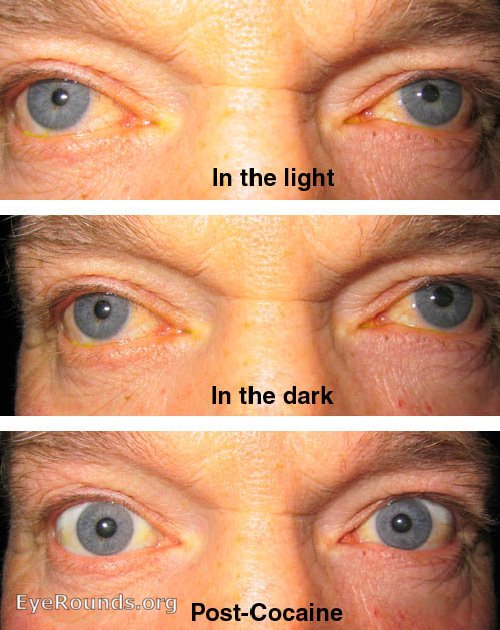
This pupil mimicry is already present during the first months of life and is an evolutionarily old phenomenon shared with other species.

ĭuring eye-contact, pupil sizes tend to synchronize across partners so that dilating pupils induce pupil dilation in the partner, and constricting pupils increase pupil constriction in the partner. Not surprisingly, the making of eye-contact provides a powerful mode of establishing each other's emotions and intentions, which can influence trust-based decisions. The eyes are crucially important during social communication and provide information to regulate interaction, express intimacy, exercise social control, and facilitate service and task goals. In humans, the eye has a morphology that is unique among primates. One important yet understudied physical characteristic that may be used to form intuitive assessments of the partner's trustworthiness is the eye. Across species, such ‘gut feeling’ may derive from a variety of sources, such as partners' bodily scents (in rodents in humans ), posture (in rodents in humans ) and emotional vocalizations (in rodents in chimpanzees in humans ). Often, trust is intuitive, affect-based and reflecting a ‘gut feeling’ based on the partner's physical features. Sometimes, assessments of trustworthiness derive from an elaborate evaluation of the risks involved and the extent to which possible benefits outweigh potential losses. Pivotal to social life is the ability to trust others-to have a positive expectation that others will cooperate and not exploit us. We suggest that pupil-contingent trust is parochial and evolved in social species in and because of group life. It further reveals that (i) male participants withhold trust from partners with constricting pupils and extend trust to partners with dilating pupils, especially when given oxytocin rather than placebo (ii) female participants trust partners with dilating pupils most, but this effect is blunted under oxytocin (iii) under oxytocin rather than placebo, pupil dilation mimicry is weaker and pupil constriction mimicry stronger and (iv) the link between pupil constriction mimicry and distrust observed under placebo disappears under oxytocin. Using incentivized trust games with partners from ingroup and outgroup whose pupils dilated, remained static or constricted, this study replicates our earlier findings. The current study investigates whether these findings are modulated by oxytocin and sex of participant and partner. Critically, this linkage between mimicry and trust was bound to interactions between ingroup members. But over and beyond this effect, we found that the pupil sizes of partners synchronize and that when pupils synchronously dilate, trust is further boosted. In our earlier research, we observed that interaction partners with dilating pupils are trusted more than partners with constricting pupils. The eyes have an important signalling function and humans use their salient and communicative eyes to intentionally and unintentionally send social signals to others, by contracting the muscles around their eyes and pupils. 12:85-89.Across species, oxytocin, an evolutionarily ancient neuropeptide, facilitates social communication by attuning individuals to conspecifics' social signals, fostering trust and bonding. Physiologic anisocoria under various lighting conditions.

Steck RP, Kong M, McCray KL, Quan V, Davey PG. Unilateral mydriasis due to Angel's trumpet. 28(3):236-7.Īndreola B, Piovan A, Da Dalt L, Filippini R, Cappelletti E. Transient anisocoria caused by aerosolized ipratropium bromide exposure from an ill-fitting face mask. False negative apraclonidine test in two patients with Horner syndrome. Horner's syndrome, Pseudo-Horner's syndrome, and simple anisocoria. Topical apraclonidine in the diagnosis of suspected Horner syndrome. A flow chart for sorting out the anisocorias.


Sex-specific lateralization of contraction anisocoria in transient pupillary light reflex. Measurement of pupil size with the video screen of an infrared autorefractor.


 0 kommentar(er)
0 kommentar(er)
